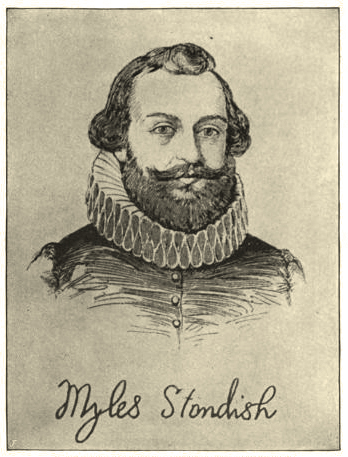The History
of Moswetuset Hummock
|
Austin Steelman's
Summary of Native History and European
American Contact
Massachusett
Indians
The
Massachusett tribe lived in what
is now the town of Quincy. Their
territory ranged from the Blue Hills
to Quincy Bay. They hunted and fished
for food in the salt marshes around
the Moswetuset Hummock and the forests
of the region. The Massachusett tribe
was a part of the Algonquian family.
The tribe numbered from 3,000 to 5,000
 leading
into the seventeenth century, but the
Old World diseases for which they had
no immunity reached them before the
colonists themselves. By the time
Myles Standish would meet sachem
Chickatabot in 1621, the tribe
numbered around five hundred. Disease
continued to decimate them. As the
1600s continued on, the Massachusett
Indians became part of the “praying
towns” established by European
missionaries. leading
into the seventeenth century, but the
Old World diseases for which they had
no immunity reached them before the
colonists themselves. By the time
Myles Standish would meet sachem
Chickatabot in 1621, the tribe
numbered around five hundred. Disease
continued to decimate them. As the
1600s continued on, the Massachusett
Indians became part of the “praying
towns” established by European
missionaries.
Sachem Chickatabot
and the Moswetuset Hummock
Chickatabot
was the sachem or chief of the
Massachuset Indians during their first
encounters with Europeans. He ruled
from Moswetuset Hummock on the north
end of what is now Wollaston Beach
abutting Quincy Bay. The hill’s name
means “shaped like an arrowhead,” but
has also been translated to mean “site
of the great house.” The Massachusett
or Moswetuset tribe took their name
from the hummock. From here,
Chickatabot had a clear view of the
surrounding area as well as access to
prime hunting and fishing grounds.
Captain John
Smith first noted the hummock,
and included it in his 1616 map. Myles
Standish, commander of Plymouth
colony, together with Squanto his
guide met Chickatabot there for in
1621. Chickatabot and the Massachusett
Indians maintained good relations with
the colonists. Chickatabot traded Indian
corn for English clothes with
Governor John Winthrop of the Plymouth
colony. The men ate and smoked tobacco
together. Chickatabot lived until 1633
when small pox killed him as it
had so many others in his tribe.
|
James R. Cameron's
Detailed Account of Moswetuset Hummock
(reprinted courtesy of the Quincy
Historical Society, 1972)
A small hillock rises from the
salt marsh which separates Quincy Bay
from the Neponset River. Moswetuset or
Massachusetts Hummock was the seat of
Chicatabot, sachem or sagamore of the
Massachusetts Indians, at the time of
the settlement of the Massachusetts Bay
Colony. It is the only important relic
of the Indians from whom the
Commonwealth derived its name.
Moswetuset retains its original form and
character, appearing today much as it
did when Captain John Smith visited New
England in 1614 or when Miles Standish
came to Squantum in 1621. >>> continue
reading the pdf
|
For more
information on historical sources
related to the Moswetuset Hummock, see
the bibliography
page
|
|
|

|










